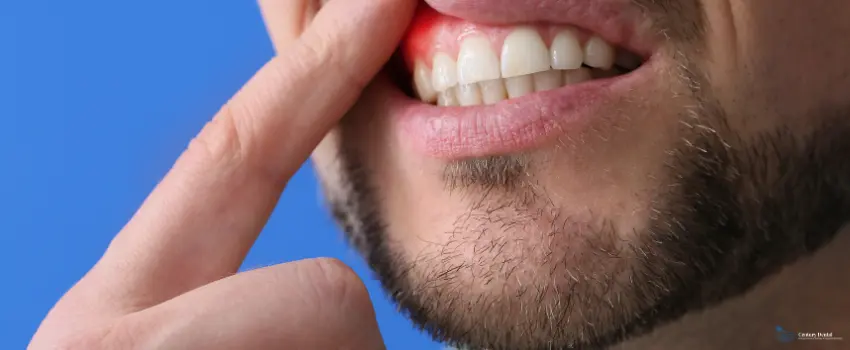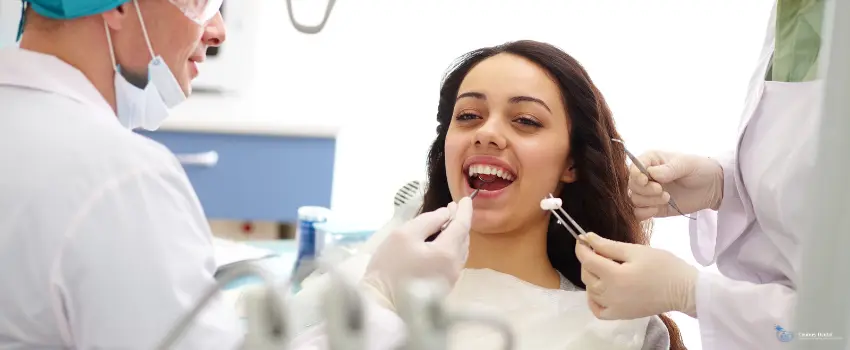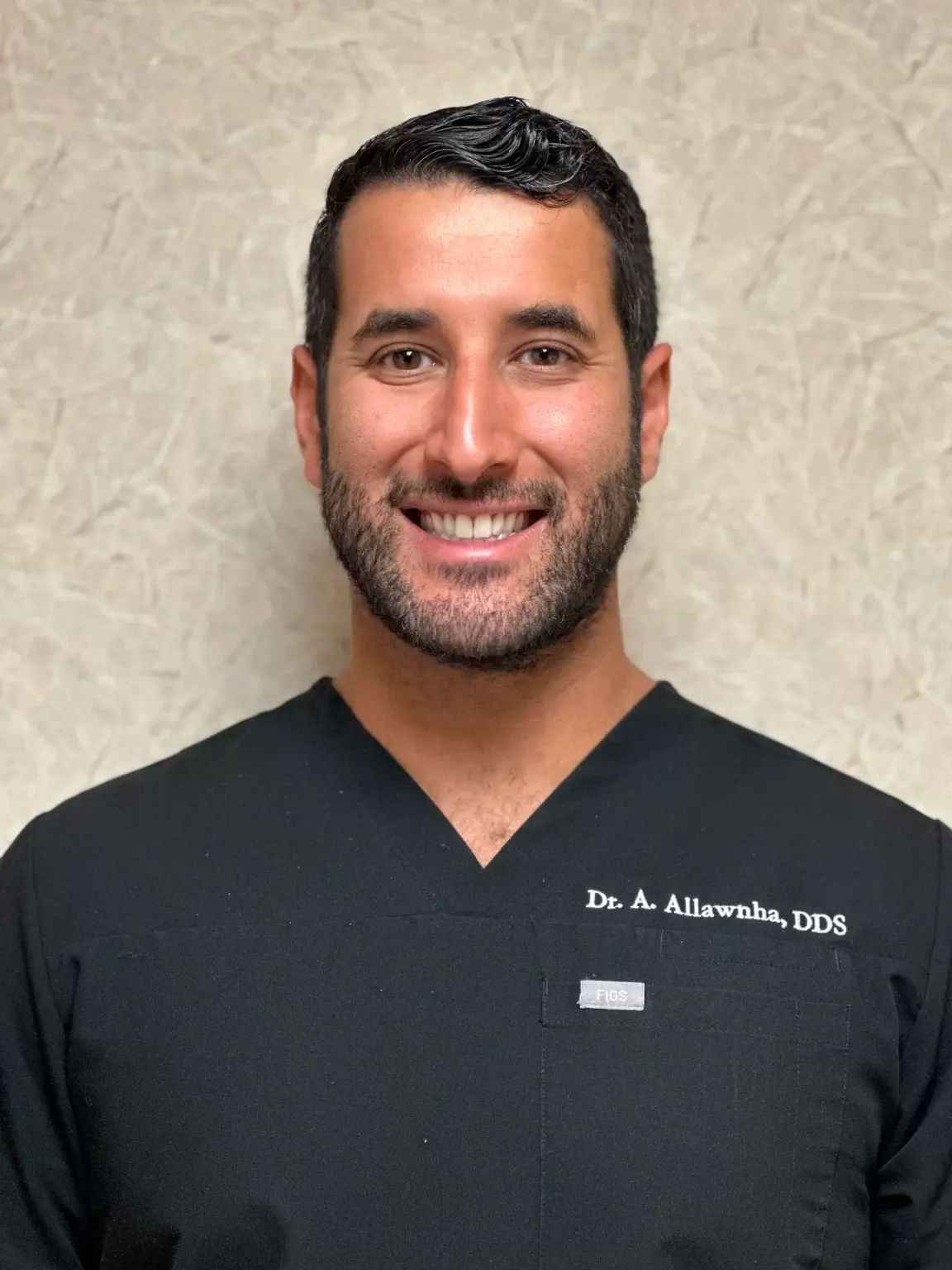April is Oral Cancer Awareness Month, an important time to raise awareness about this serious and life-threatening disease that affects thousands of people yearly. While several factors can increase the risk of developing oral cancer, such as tobacco and alcohol use, one often overlooked factor is gum disease.
Understanding Oral Cancer
Oral or mouth cancer occurs when cells in the mouth or throat mutate and grow uncontrollably, forming a tumor or mass. It can affect anyone, regardless of age, gender, or lifestyle. Approximately 54,000 people in the United States are diagnosed with oral or mouth cancer this year alone.
Early detection is crucial when treating this cancer, so it’s imperative to be aware of the oral cancer symptoms. Some of the most common oral cancer symptoms include:
-
A sore or lump in the mouth that doesn’t heal
-
Pain or difficulty swallowing
-
Persistent hoarseness or sore throat
-
Red or white patches in the mouth
-
Numbness in the mouth or lips
-
Difficulty moving the tongue or jaw
-
Loose teeth or dentures
-
Unexplained weight loss
While anyone can develop oral or mouth cancer, certain factors can increase your risk, including:
-
Tobacco use (including smoking and smokeless tobacco)
-
Heavy alcohol consumption
-
HPV (human papillomavirus) infection
-
Family history of cancer
-
Excessive sun exposure (which can increase the risk of lip cancer)
-
Poor oral hygiene
3 Types of Oral Cancer
There are several different types of oral cancer that can develop. Understanding these types can help you better recognize the disease’s signs and symptoms and can also inform your approach to prevention and treatment.
1. Squamous Cell Carcinoma
This is the most common type of mouth cancer, accounting for around 90% of all cases. Squamous cell carcinoma usually develops in the lining of the mouth or throat. It can appear as a white or red patch, a lump, or an ulcer. It can also cause pain, difficulty swallowing, or a feeling of something stuck in the throat.
2. Verrucous Carcinoma
Verrucous carcinoma is a rare subtype that accounts for just 5% of cases. This type of cancer usually appears as a slow-growing, wart-like growth in the mouth and is typically painless. Older men who use tobacco are at risk of developing this disease.
3. Minor Salivary Gland Carcinomas
The salivary glands are located throughout the mouth and throat and produce saliva that helps to moisten and lubricate the mouth. Minor salivary gland carcinomas are cancers that start in these glands. These types of cancers are rare, but can be particularly aggressive and difficult to treat.
The Connection Between Gum Disease and Oral Cancer
Gum disease, also known as periodontal disease, is a condition that affects the gums and the surrounding tissues. It is caused by bacteria that build up in the mouth, which can lead to inflammation, bleeding, and in severe cases, tooth loss.
Research has shown a strong link between gum disease and mouth cancer. A study proves that people with gum disease are 14% more likely to develop mouth cancer than those with healthy gums. The reason for this link is not yet fully understood, but it is thought that the inflammation and bacteria associated with gum disease may play a role in developing this disease.
The bacteria that cause gum disease can enter the bloodstream and travel to other parts of the body, including the mouth and throat. Once there, they can cause inflammation and damage to the cells. This facilitates the beginning of oral cancer. Moreover, gum disease can weaken the immune system, making it harder for the body to fight off cancer cells.
Maintaining Good Gum Health
Keeping your gums healthy is not only important for maintaining strong teeth, but it also plays a significant role in preventing oral or mouth cancer. The connection between gum disease and mouth cancer is not widely known, but studies have shown that poor oral hygiene and gum disease can increase the risk of developing this disease.
The good news is that there are simple steps you can take to maintain healthy gums and reduce your risk of mouth cancer. Here are some tips for keeping your gums healthy:
1. Brush your teeth twice a day.
One of the most important things you can do to prevent oral or mouth cancer is to brush your teeth twice daily with fluoride toothpaste. Brushing your teeth helps remove the plaque and bacteria that can build up on your teeth and gums, leading to gum disease.
2. Floss daily.
Floss daily to remove plaque and bacteria from between your teeth. Flossing is an effective way to remove food particles and debris from areas that your toothbrush can’t reach.
3. Use an antimicrobial mouthwash.
An antimicrobial mouthwash can also help kill bacteria in your mouth and keep your gums healthy. An antimicrobial mouthwash contains ingredients designed to kill the bacteria that can cause gum disease and other oral health problems.
4. Avoid excessive smoking.
Smoking is a major risk factor for gum disease and mouth cancer. Limiting tobacco use is one of the best things you can do to improve your oral health and reduce your risk of developing this deadly disease.
5. Visit your dentist regularly.
Visiting your dentist regularly for checkups and cleanings is vital to maintaining optimum oral health. Your dentist can help identify potential issues early on and provide treatment as needed to keep your gums healthy and reduce your risk of developing oral or mouth cancer.
Oral Cancer Treatments
Successfully treating mouth cancer depends on several factors, including the cancer’s location, stage, overall health, and personal preferences. Your doctor may recommend a single treatment or a combination of therapies tailored to your specific needs. It is crucial to have an open and honest discussion with your doctor to explore all available options. Here are the standard treatments for mouth cancer:
1. Surgery
Surgery is often the first-line treatment for oral or mouth cancer. This aims to remove the cancerous tissue and any nearby lymph nodes that may be affected. In some cases, reconstructive surgery may be necessary to restore the function and appearance of the mouth or throat.
2. Radiation Therapy
Radiation therapy uses high-energy X-rays or other types of radiation to kill cancer cells. It can be used as a primary treatment for small tumors or as an additional procedure after surgery to destroy any remaining cancer cells.
3. Chemotherapy
Chemotherapy can be effective, primarily when combined with other treatments like surgery or oral cancer radiation therapy. It targets and kills cancer cells by administering drugs orally or intravenously. This treatment may take several weeks or months.
4. Early Detection
Early detection is crucial when treating life-threatening dental problems like cancer. Regular dental checkups are essential for detecting cancer in its early stages when it is easier to treat and have a higher chance of successful treatment.
During your dental checkup, your dentist will thoroughly examine your mouth, including your gums and tongue, and look for any signs of cancer. They may also use special tests like a biopsy or imaging tests to help diagnose this disease.
The Bottom Line
Gum health is an often-overlooked factor in preventing oral or mouth cancer. Maintaining healthy gums through good oral hygiene practices can significantly reduce your risk of developing this life-threatening disease. As we observe Oral Cancer Awareness Month this April, schedule a dental checkup and learn about the importance of gum health for preventing mouth cancer and other dental problems.
Keep your smile in top shape with Century Dental.
While many people tend to focus solely on the appearance of their teeth, the health of your gums is just as crucial in preventing dental problems and maintaining overall oral health. At Century Dental, we offer comprehensive gum health treatments.
From regular cleanings to periodontal therapy, our team will work with you to keep your gums healthy and reduce your risk of developing oral cancer. Schedule an appointment with our dentist in Treasure Island, FL, and ensure your smile stays bright and healthy for years.







